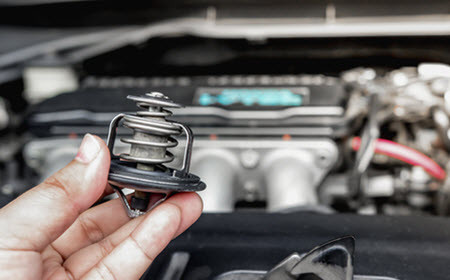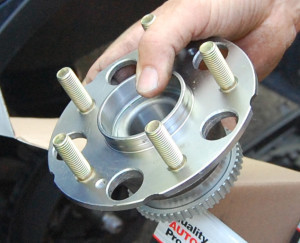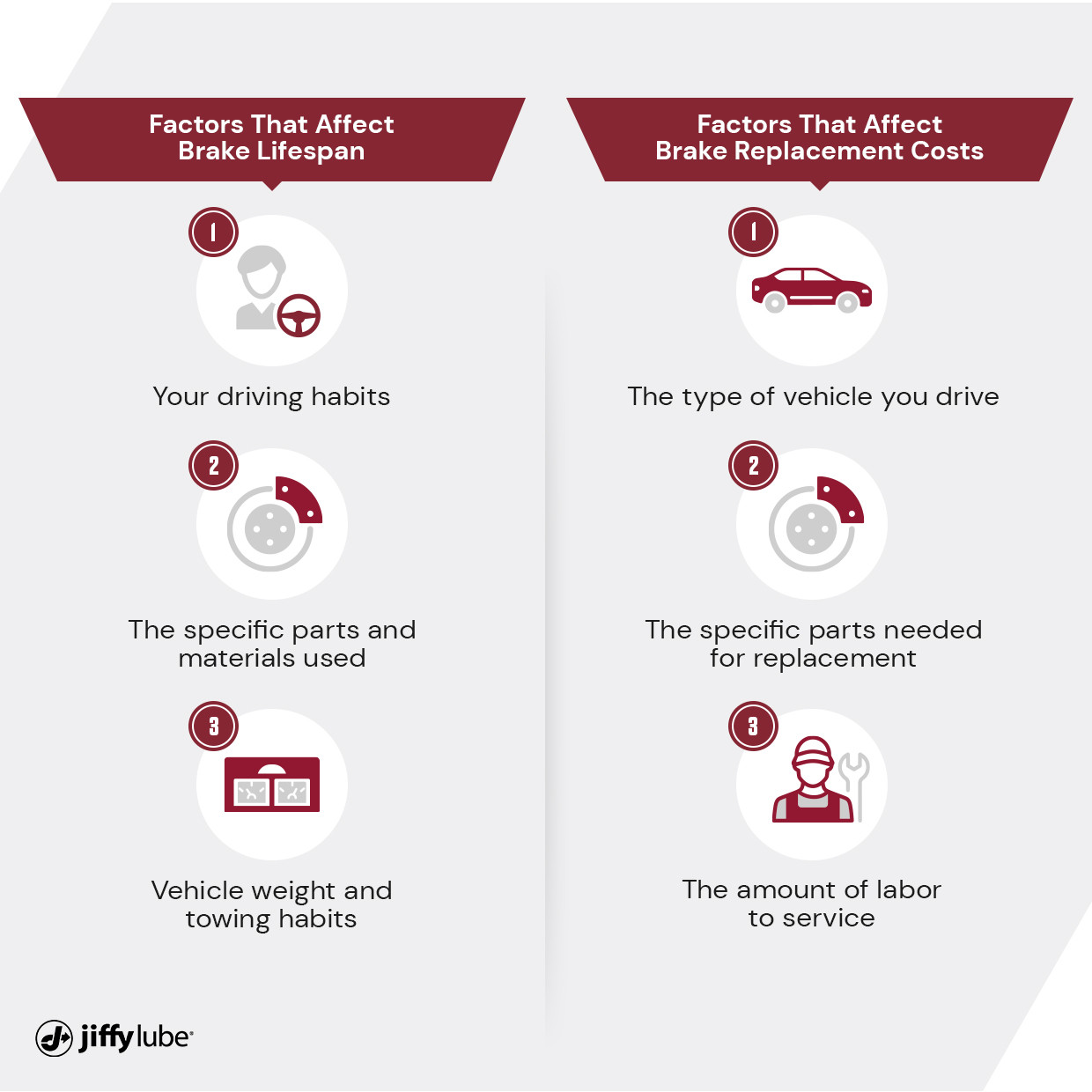Who Fixes Electrical Problems In Cars: Finding The Right Expert
Is your car showing signs of electrical trouble? Knowing who fixes electrical problems in cars is crucial for getting your vehicle back on the road safely and efficiently. At CARDIAGTECH.NET, we understand the complexities of modern automotive electrical systems and are here to guide you to the right professionals. Don’t let electrical issues leave you stranded, discover the experts and solutions to keep your car running smoothly with our comprehensive guide, ensuring your automotive repair needs are met with quality and reliability, supported by trusted auto repair services and specialized auto electricians.
1. Understanding Car Electrical Systems
Before diving into who fixes electrical problems in cars, it’s essential to understand the basics of a car’s electrical system. This system is the backbone of your vehicle, powering everything from the engine to the entertainment system.
1.1 Key Components of the Electrical System
- Battery: The primary source of electrical energy. It provides the initial power to start the engine and supports other electrical components.
- Alternator: Recharges the battery while the engine is running and supplies additional power to the electrical system.
- Starter Motor: An electric motor that turns the engine to initiate combustion.
- Fuses: Safety devices that protect electrical circuits from overcurrent.
- Wiring: A network of wires that distribute electricity throughout the vehicle.
- Sensors and Control Units: Monitor and control various aspects of the engine and vehicle operation.
- ECU (Engine Control Unit): The main computer that manages engine performance.
- Ignition System: Components that create the spark to ignite the fuel-air mixture in the engine.
Alt Text: Car battery with jumper cables attached, illustrating the process of jump-starting a vehicle with a dead battery.
1.2 Common Electrical Problems
- Dead Battery: Often caused by leaving lights on, a faulty charging system, or old age. According to AAA, most car batteries last between three to five years.
- Alternator Failure: Results in a dead battery, dimming lights, and potential stalling.
- Starter Motor Issues: Leads to a clicking sound when turning the key or the engine not turning over.
- Blown Fuses: Caused by overcurrent, leading to the failure of a specific electrical circuit.
- Wiring Problems: Can result from corrosion, damage, or loose connections, causing intermittent electrical issues.
- Spark Plug Problems: Can cause engine misfires, reduced fuel efficiency, and rough idling. RepairPal estimates the cost to replace spark plugs to be between $207-$264 per plug.
- Ignition Coil Failure: Affects spark plug performance, leading to engine trouble.
- ECU Malfunctions: Can cause a variety of engine-related problems, including failure to start. RepairPal estimates that an Engine Control Module replacement costs between $960-$1,035.
2. Identifying the Right Professional to Fix Electrical Problems
When your car exhibits electrical problems, it’s crucial to find the right professional. Not all mechanics are created equal, and electrical issues require specialized knowledge and tools.
2.1 General Mechanics vs. Automotive Electricians
- General Mechanics: These professionals can handle a wide range of automotive repairs, including basic electrical issues like battery replacements or fuse replacements.
- Automotive Electricians: These are specialists who focus specifically on the electrical systems of vehicles. They have advanced training and diagnostic tools to tackle complex electrical problems.
2.2 When to Choose an Automotive Electrician
You should consider an automotive electrician when:
- The problem is complex and difficult to diagnose.
- The issue involves multiple electrical components.
- You suspect a problem with the car’s wiring harness.
- The problem affects the car’s computer system (ECU).
- You’re experiencing intermittent electrical issues that are hard to trace.
2.3 Finding a Reputable Automotive Electrician
- Ask for Recommendations: Seek referrals from friends, family, or trusted mechanics.
- Check Online Reviews: Look for electricians with positive reviews on platforms like Google, Yelp, and the Better Business Bureau.
- Verify Certifications: Ensure the electrician is certified by organizations like the National Institute for Automotive Service Excellence (ASE). ASE certification indicates that the technician has met specific standards of competence and has passed rigorous exams.
- Inquire About Experience: Ask about the electrician’s experience with your car’s make and model.
- Request a Diagnostic Estimate: Get a detailed estimate of the diagnostic process and repair costs before authorizing any work.
3. The Diagnostic Process
Diagnosing electrical problems in cars requires a systematic approach. Automotive electricians use specialized tools and techniques to pinpoint the root cause of the issue.
3.1 Common Diagnostic Tools
- Multimeter: Measures voltage, current, and resistance in electrical circuits.
- Scan Tool: Reads diagnostic trouble codes (DTCs) from the car’s computer system.
- Oscilloscope: Displays electrical signals as waveforms, allowing technicians to analyze circuit behavior.
- Wiring Diagrams: Provide detailed schematics of the car’s electrical system.
- Test Lights: Simple tools for checking circuit continuity and voltage.
3.2 Steps in the Diagnostic Process
- Visual Inspection: Checking for obvious signs of damage, corrosion, or loose connections.
- Battery Test: Assessing the battery’s voltage and capacity.
- Charging System Test: Evaluating the alternator’s output and performance.
- Scanning for DTCs: Retrieving diagnostic trouble codes from the car’s computer.
- Circuit Testing: Using a multimeter or test light to check individual circuits.
- Component Testing: Testing the functionality of specific electrical components like sensors, relays, and switches.
- Wiring Harness Inspection: Examining the wiring harness for damage or shorts.
3.3 Understanding Diagnostic Trouble Codes (DTCs)
DTCs are codes stored in the car’s computer that indicate a problem with a specific system or component. While DTCs can provide valuable information, they don’t always pinpoint the exact cause of the problem. A skilled technician will use DTCs as a starting point for further diagnosis.
4. Common Electrical Repairs and Costs
The cost to fix electrical problems in cars can vary widely depending on the nature and complexity of the issue. Here are some common electrical repairs and their average costs:
4.1 Battery Replacement
- Average Cost: $342-$352 (RepairPal)
- Description: Replacing a dead or weak battery with a new one.
- Symptoms: Dim interior lights, slow engine turnover, battery warning light.
- Preventive Tips: Take long trips regularly, avoid excessive heat, secure the battery tightly.
4.2 Alternator Replacement
- Average Cost: $608-$790 (RepairPal)
- Description: Replacing a faulty alternator that is not charging the battery properly.
- Symptoms: Power warning lights, dimming lights, electrical components losing power, vehicle stalling.
- Preventive Tips: Get repairs quickly, get regular maintenance, don’t overload the electrical system.
Alt Text: Close-up of a car alternator, highlighting its components and importance in the vehicle’s electrical system.
4.3 Starter Motor Replacement
- Average Cost: $428-$581 (RepairPal)
- Description: Replacing a malfunctioning starter motor that is not turning the engine.
- Symptoms: Clicking noise when turning the key, engine not turning over.
- Preventive Tips: Control battery corrosion, maintain battery and fuses, avoid frequent stopping and starting.
4.4 Fuse Replacement
- Average Cost: $125 (GetJerry.com) for fuse box replacement; less for individual fuses.
- Description: Replacing blown fuses to restore power to specific circuits.
- Symptoms: Specific electrical components not working (e.g., radio, lights).
- Maintenance Tips: Ensure correct amperage fuses are used, inspect fuse box for damage.
4.5 Spark Plug Replacement
- Average Cost: $207-$264 per plug (RepairPal)
- Description: Replacing worn spark plugs to improve engine performance.
- Symptoms: Engine trouble, “Check Engine” light, decreased gas mileage, power surges.
- Maintenance Tips: Avoid rough driving, address leaking engine fluids.
4.6 Ignition Coil Replacement
- Average Cost: $214-$290 per coil (RepairPal)
- Description: Replacing faulty ignition coils to ensure proper spark plug function.
- Symptoms: Engine trouble, “Check Engine” light, car refuses to start, reduced gas mileage.
- Maintenance Tips: Follow the manufacturer’s replacement schedule, replace spark plugs when needed.
4.7 Wiring Repair
- Average Cost: $88-$111 (RepairPal) to diagnose and $1,300-$2,000 (OSVehicle.com) to repair
- Description: Repairing or replacing damaged or corroded wiring.
- Symptoms: Flickering lights, power loss, burning plastic smell, starting issues, frequently blowing fuses.
- Preventive Tips: Winterize your car, fix electrical problems promptly, regularly wash your car.
4.8 Engine Control Module (ECM) Replacement
- Average Cost: $960-$1,035 (RepairPal)
- Description: Replacing a faulty ECM that is causing engine problems.
- Symptoms: Car won’t start, “Check Engine” light, frequent stalling.
- Maintenance Tips: Limited preventive measures, as it often depends on chance.
5. Advanced Electrical Diagnostics
Complex electrical issues may require advanced diagnostic techniques. These techniques help automotive electricians pinpoint elusive problems that are not easily identified through basic testing.
5.1 CAN Bus Diagnostics
The Controller Area Network (CAN) bus is a communication network that allows various electronic control units (ECUs) in the car to communicate with each other. Problems with the CAN bus can cause a wide range of electrical issues.
- Symptoms: Multiple warning lights, communication errors, erratic system behavior.
- Diagnostic Tools: CAN bus analyzers, oscilloscopes.
- Repair Techniques: Identifying and repairing broken or shorted CAN bus wires, replacing faulty ECUs.
5.2 Computer Reprogramming
Sometimes, electrical problems can be resolved by reprogramming the car’s computer. This involves updating the software on the ECU to fix bugs or improve performance.
- Tools: Diagnostic scan tools with reprogramming capabilities, access to manufacturer software.
- Process: Connecting the scan tool to the car’s diagnostic port, downloading the latest software from the manufacturer, and installing it on the ECU.
5.3 Using Oscilloscopes for Signal Analysis
Oscilloscopes are advanced diagnostic tools that display electrical signals as waveforms. They can be used to analyze the behavior of sensors, actuators, and other electrical components.
- Applications: Analyzing sensor signals, diagnosing ignition system problems, identifying intermittent electrical issues.
- Benefits: Precise measurement of voltage and timing, visual representation of electrical signals.
6. Preventative Maintenance for Car Electrical Systems
Preventative maintenance can help extend the life of your car’s electrical system and prevent costly repairs.
6.1 Regular Battery Maintenance
- Check Battery Terminals: Clean any corrosion from the battery terminals using a wire brush and baking soda solution.
- Test Battery Voltage: Use a multimeter to check the battery voltage. A fully charged battery should read around 12.6 volts.
- Secure Battery Connections: Ensure the battery cables are securely attached to the terminals.
6.2 Inspecting and Maintaining Wiring
- Visual Inspection: Check for damaged, frayed, or corroded wires.
- Secure Loose Wires: Use zip ties or electrical tape to secure any loose wires.
- Protect Wires from Heat: Use heat-resistant sleeving to protect wires from engine heat.
6.3 Keeping the Charging System in Good Condition
- Check Alternator Belt: Inspect the alternator belt for cracks, wear, or looseness.
- Test Alternator Output: Use a multimeter to check the alternator’s output voltage. It should be between 13.5 and 14.5 volts.
- Avoid Overloading the Electrical System: Limit the use of aftermarket accessories that draw excessive power.
6.4 Monitoring Fuse Condition
- Inspect Fuses Regularly: Check the fuse box for blown fuses.
- Replace Blown Fuses: Use a fuse puller to remove blown fuses and replace them with fuses of the correct amperage.
- Identify the Cause of Blown Fuses: If a fuse blows repeatedly, identify and fix the underlying problem.
7. Why Choose CARDIAGTECH.NET for Your Automotive Needs
At CARDIAGTECH.NET, we provide top-notch equipment that makes diagnosing and repairing vehicle electrical systems easier and more efficient. Our comprehensive selection of tools is designed to meet the needs of both seasoned automotive electricians and general mechanics. Here’s why you should consider CARDIAGTECH.NET for your automotive needs:
7.1 Wide Range of High-Quality Diagnostic Tools
CARDIAGTECH.NET offers an extensive range of diagnostic tools, including:
- Multimeters: Precision tools for measuring voltage, current, and resistance.
- Scan Tools: Advanced devices for reading and clearing diagnostic trouble codes (DTCs).
- Oscilloscopes: Essential for analyzing electrical signals and diagnosing complex issues.
- Battery Testers: Reliable testers to assess battery health and performance.
- Wiring Kits: Comprehensive kits for repairing and replacing damaged wiring.
Alt Text: A high-quality automotive multimeter, highlighting its features and utility in diagnosing electrical problems.
7.2 Expert Advice and Support
We’re committed to helping you choose the right tools for your specific needs. Our team of experts offers personalized advice and support to ensure you get the most out of your investment. Whether you’re tackling a simple battery replacement or a complex ECU reprogramming, we are here to guide you every step of the way.
7.3 Competitive Pricing
CARDIAGTECH.NET offers competitive pricing on all our products, making it easier for you to access high-quality tools without breaking the bank. Our goal is to provide affordable solutions that deliver exceptional value.
7.4 Fast and Reliable Shipping
We understand the importance of getting your tools quickly so you can get back to work. CARDIAGTECH.NET offers fast and reliable shipping to ensure you receive your order promptly.
7.5 Tools Designed to Improve Efficiency
Our tools are specifically designed to help you:
- Diagnose Problems Quickly: Advanced scan tools and oscilloscopes allow for faster and more accurate diagnostics.
- Reduce Repair Time: Efficient wiring kits and battery testers streamline the repair process.
- Increase Accuracy: Precision multimeters and other measuring devices ensure accurate readings.
- Enhance Safety: High-quality tools help you work safely and avoid potential hazards.
8. The Future of Automotive Electrical Systems
As cars become more technologically advanced, their electrical systems are becoming increasingly complex. This trend is expected to continue, with electric vehicles (EVs) and advanced driver-assistance systems (ADAS) becoming more prevalent.
8.1 Electric Vehicles (EVs)
EVs rely heavily on electrical systems, with high-voltage batteries, electric motors, and complex control systems. Diagnosing and repairing EVs requires specialized knowledge and tools.
- High-Voltage Systems: EVs operate at high voltages (e.g., 400 volts or more), requiring technicians to follow strict safety procedures.
- Battery Management Systems (BMS): The BMS monitors and controls the battery pack, ensuring safe and efficient operation.
- Electric Motor Diagnostics: Diagnosing problems with electric motors requires specialized equipment like motor testers and insulation testers.
8.2 Advanced Driver-Assistance Systems (ADAS)
ADAS features like lane departure warning, adaptive cruise control, and automatic emergency braking rely on a network of sensors, cameras, and control units. These systems require precise calibration and maintenance to ensure proper functioning.
- Sensor Calibration: ADAS sensors must be calibrated after any repairs or replacements.
- Software Updates: ADAS systems often require software updates to improve performance or fix bugs.
- Diagnostic Challenges: Diagnosing ADAS problems can be challenging due to the complexity of the systems.
8.3 The Need for Continuous Training
As automotive technology evolves, it’s essential for technicians to stay up-to-date with the latest developments. Continuous training is crucial for mastering new diagnostic techniques and repair procedures.
- Online Courses: Many organizations offer online courses on automotive electrical systems and diagnostics.
- Hands-On Training: Hands-on training programs provide technicians with practical experience using diagnostic tools and repair techniques.
- Certification Programs: Certification programs like ASE demonstrate a technician’s competence and commitment to professional development.
9. Frequently Asked Questions (FAQs)
1. What are the most common signs of an electrical problem in a car?
Common signs include dimming lights, a dead battery, the engine not turning over, blown fuses, and flickering lights.
2. Can I fix electrical problems myself, or should I hire a professional?
Simple tasks like replacing a fuse or jump-starting a battery can be done yourself. However, complex electrical issues should be handled by a qualified automotive electrician.
3. How much does it cost to diagnose an electrical problem in a car?
The cost to diagnose an electrical problem typically ranges from $88 to $111. However, this can vary depending on the complexity of the issue and the shop’s labor rates.
4. What is the difference between a general mechanic and an automotive electrician?
A general mechanic can handle a wide range of automotive repairs, while an automotive electrician specializes in electrical systems. Automotive electricians have advanced training and diagnostic tools to tackle complex electrical problems.
5. How can I find a reputable automotive electrician?
Ask for recommendations, check online reviews, verify certifications, inquire about experience, and request a diagnostic estimate.
6. What is a diagnostic trouble code (DTC)?
A DTC is a code stored in the car’s computer that indicates a problem with a specific system or component. While DTCs can provide valuable information, they don’t always pinpoint the exact cause of the problem.
7. What is the Controller Area Network (CAN) bus?
The CAN bus is a communication network that allows various electronic control units (ECUs) in the car to communicate with each other. Problems with the CAN bus can cause a wide range of electrical issues.
8. How can I prevent electrical problems in my car?
Regular battery maintenance, inspecting and maintaining wiring, keeping the charging system in good condition, and monitoring fuse condition can help prevent electrical problems.
9. What is the role of the Engine Control Module (ECM) in a car’s electrical system?
The ECM is a computer that controls the engine. Without it, the engine won’t start.
10. Why is continuous training important for automotive technicians?
As automotive technology evolves, it’s essential for technicians to stay up-to-date with the latest developments. Continuous training is crucial for mastering new diagnostic techniques and repair procedures.
10. Act Now and Keep Your Vehicle Running Smoothly
Don’t let electrical problems compromise the reliability and safety of your car. Understanding who fixes electrical problems in cars is just the first step. To ensure your vehicle receives the best care, you need the right tools and equipment.
Are you facing electrical issues in your car? Do you want to ensure your vehicle runs smoothly and reliably? Contact CARDIAGTECH.NET today. Our team of experts is ready to assist you with high-quality diagnostic tools and equipment that will make your job easier and more efficient.
- Address: 276 Reock St, City of Orange, NJ 07050, United States
- WhatsApp: +1 (641) 206-8880
- Website: CARDIAGTECH.NET
Take the first step towards resolving your car’s electrical problems now. Contact us and let CARDIAGTECH.NET provide you with the tools and support you need to keep your vehicle in top condition. Don’t wait – your car’s health is our priority.








